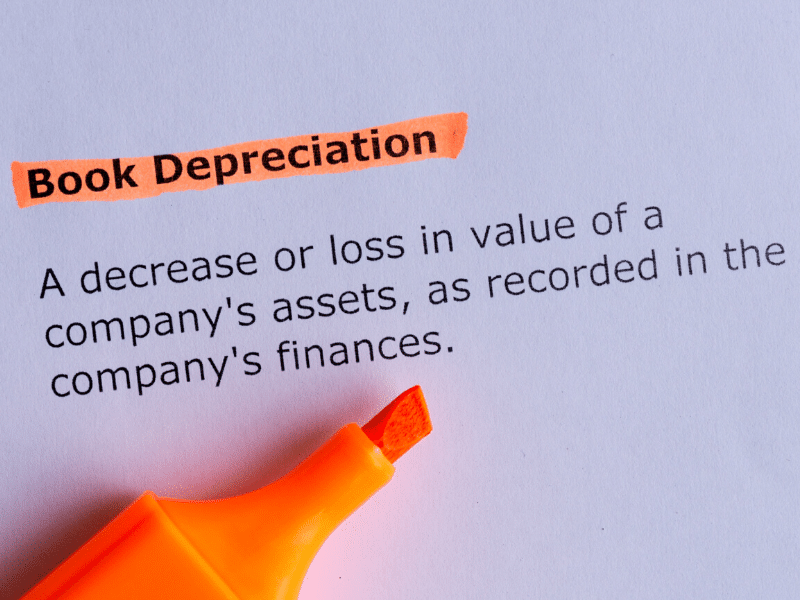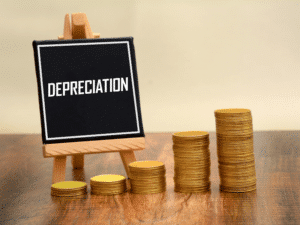Depreciation has a bad reputation. After all, nobody wants their assets to lose value. However, from a business perspective, depreciation helps your tax situation. Business owners need to keep close track of their depreciation expenses. Then, they can deduct it at tax time. To get started, you need to know how to calculate depreciation expense.
What Is Depreciation?
The definition of depreciation is the loss in value to an asset over time, especially from wear and tear. Some assets like real estate appreciate with time, while others like vehicles depreciate as soon as you drive off the car lot. In accounting terms, depreciation measures the decreasing value of a business asset over its useful life. This can apply to tools, equipment, computers, furniture, vehicles, and any other asset you use to conduct business.
What Is Depreciation Expense?
When a long term asset is purchased its depreciation expense is often stretched out over accounting periods. Instead of writing off the expense all at once, it is spread out over the course of its useful life. Spreading the depreciation expense prevents overstating it the expense around its purchase and understating it in the future. The dollar value of depreciation is reported on an income statement as depreciation expense. For example:
If you are a fleet owner and purchased a new car for $30,000, and plan to rent it out for the next 5 years. You could depreciate up to $6,000 per year, depending on the vehicle’s scrap value.
How To Calculate Depreciation Expense
You need to use the asset during the accounting period to depreciate it. If it is purchased mid-way through the year, you depreciate it using an annual percentage rate. Depreciation expenses must be deducted during the same period that the asset generated revenue.
Straight-Line Depreciation
Straight-line depreciation is the most commonly used method for calculating depreciation expense. This method applies a flat depreciation expense each year for the course of the assets’ useful life. To calculate straight-line depreciation you will need to know:
-
The Cost of the Asset
This figure includes all costs associated with acquiring an asset, including cost, transportation, set-up, and training expenses.
-
The Useful Life of the Asset
The useful life varies, depending on the asset. If you don’t know your asset’s useful life, you should consult with your tax advisor.
-
Salvage Value / Scrap Value
Scrap value measures the value of an asset at the end of its useful life. If you’re not sure, talk to your tax advisor to find out.
Accumulated Depreciation
Accumulated depreciation tracks the total cost of depreciation on your balance sheet. It increases over time as depreciation expenses build up. When the asset is finally scrapped or sold, accumulated depreciation written off so the asset can be removed from the accounting books.
Best Depreciation Methods
Straight-line is the most common depreciation method. However, there are numerous methods businesses can choose from. Businesses can use whichever one best fits their financial goals.
Choosing a depreciation method can be intimidating. The best choice depends on what type of business you have and your financial goals. You should consult with a tax advisor about which depreciation method has the most tax benefits.
Accelerated Depreciation
Accelerated depreciation allows you to increase the amount of depreciation expense of the asset in the initial years of service instead of evenly spreading it out. This type of depreciation, also called the declining method, can help minimize tax exposure. This method is best used to decrease short-term taxable income by maximizing depreciation deductions during assets early use life.
The Sum Of The Years Digits
Businesses commonly use this method for assets are more productive earlier in their useful life. This method accelerates depreciation on a waning schedule. For example, if the useful life is 10 years, this method adds 4+3+2+1 to get 10 years. Depreciation for year one is 4/10 or 40%. It’s 30% in year two, and so on.
Unit Of Production
This type of depreciation is most popular among manufacturers. It assigns an equal expense rate to each unit produced. It involves taking the original cost, subtracting the salvage value, then dividing by the expected number of units the asset is anticipated to produce.
Airbnb Hosts And Property Owners
As an Airbnb host, the cost of acquiring, maintaining, and renovating your home can be depreciated.
You can only depreciate your home if you own it, so renters can’t take advantage of this deduction. However, owners can only depreciate their home for the amount of time it was available for rent.
If your home was available to rent for 200 days out of the year, then the annual useful life of your home was 200 days. You can depreciate your home over that time. Once you recoup the total cost, you can’t write off any more depreciation expenses.
Rideshare And Vehicle Owners
If you own vehicles for business purposes, you can depreciate the cost of your vehicle. Vehicle depreciation can help you recoup the cost of your vehicle over its useful life.
To depreciate your car, you must first establish its useful life. Many owners choose a five-year usage period. However, you can only depreciate your vehicle if you own it. Leases aren’t eligible.
If you are already deducting car payments, you can’t depreciate your vehicle. You can’t write off both.
In addition, the standard mileage rate deduction already includes the depreciation expense. As a result, you can’t deduct appreciation if you take the standard mileage rate.
Get Help With Depreciating Assets
Wondering which assets to depreciate? Or which method of depreciation you should use? Get expert advice. Consulting with a tax advisor can help you make an educated decision about makes the most sense for your business. Contact Shared Economy for a free one-on-one strategy session, free tax tips, and much more. Click here to get started now.

